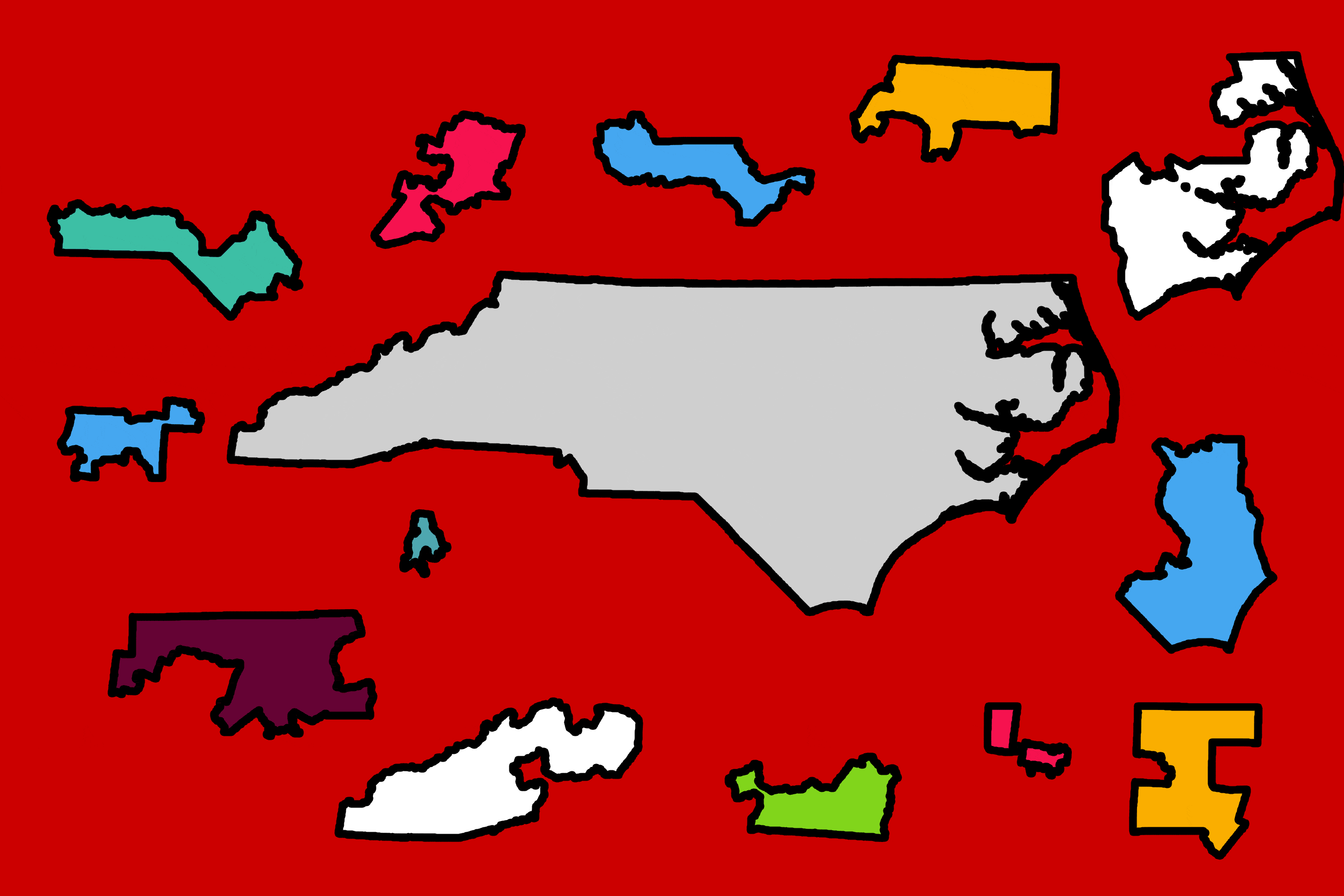
Next year, state lawmakers will redraw the congressional district maps based on the 2020 census, a process mandated by the Constitution. In anticipation of this new redistricting cycle, Slate is revamping our gerrymander puzzle game from 2013 as part of our Who Counts? initiative. We’ll be releasing new puzzles over the upcoming weeks, highlighting the worst and weirdest gerrymanders in the country. Find out how quickly you can put these states back together and learn everything that’s at stake in the next round of redistricting.
This map contains one of the most notorious and heavily litigated gerrymanders in American history. It allowed Republicans to seize 10 of North Carolina’s 13 congressional districts, even when both parties received an equal share of the statewide vote. Thomas Hofeller, the GOP’s redistricting guru, drew it in consultation with Republican Rep. David Lewis, a Republican. Lewis did not conceal his goal; while defending the map, he declared: “I think electing Republicans is better than electing Democrats. So I drew this map to help foster what I think is better for the country.” The plan packed as many Democrats as possible into three blue districts, then distributed the rest throughout dark-red districts where their votes wouldn’t matter. One line cuts through the middle of Asheville to ensure that the Democratic city cannot elect a Democratic representative. Voting rights advocates once held a fun run along the district line that divides Asheville into two districts.
In 2019, the U.S. Supreme Court threw out a challenge to the map, holding that federal courts may not invalidate partisan gerrymanders. Months later, however, a state court struck down the map under the North Carolina constitution. The court relied on Hofeller’s secret files, which his daughter released after his death. These damning documents proved beyond a shadow of a doubt that Hofeller and Lewis’ chief goal while drawing the map was to dilute Democratic votes. The court ordered the North Carolina legislature to redraw congressional districts without using racial or partisan data. It complied. And while the new map isn’t perfect, it is vastly fairer than the previous version. In November, it will let many North Carolinians participate in a competitive election for the first time this decade.
Were these too easy? Try the rest of our gerrymander puzzles here.
Support This Work
Help us cover the central question: “Who counts?” Your Slate Plus membership will fund our work on voting, immigration, gerrymandering, and more through 2020.
from Slate Magazine https://ift.tt/2X1yVBe
via IFTTT
沒有留言:
張貼留言